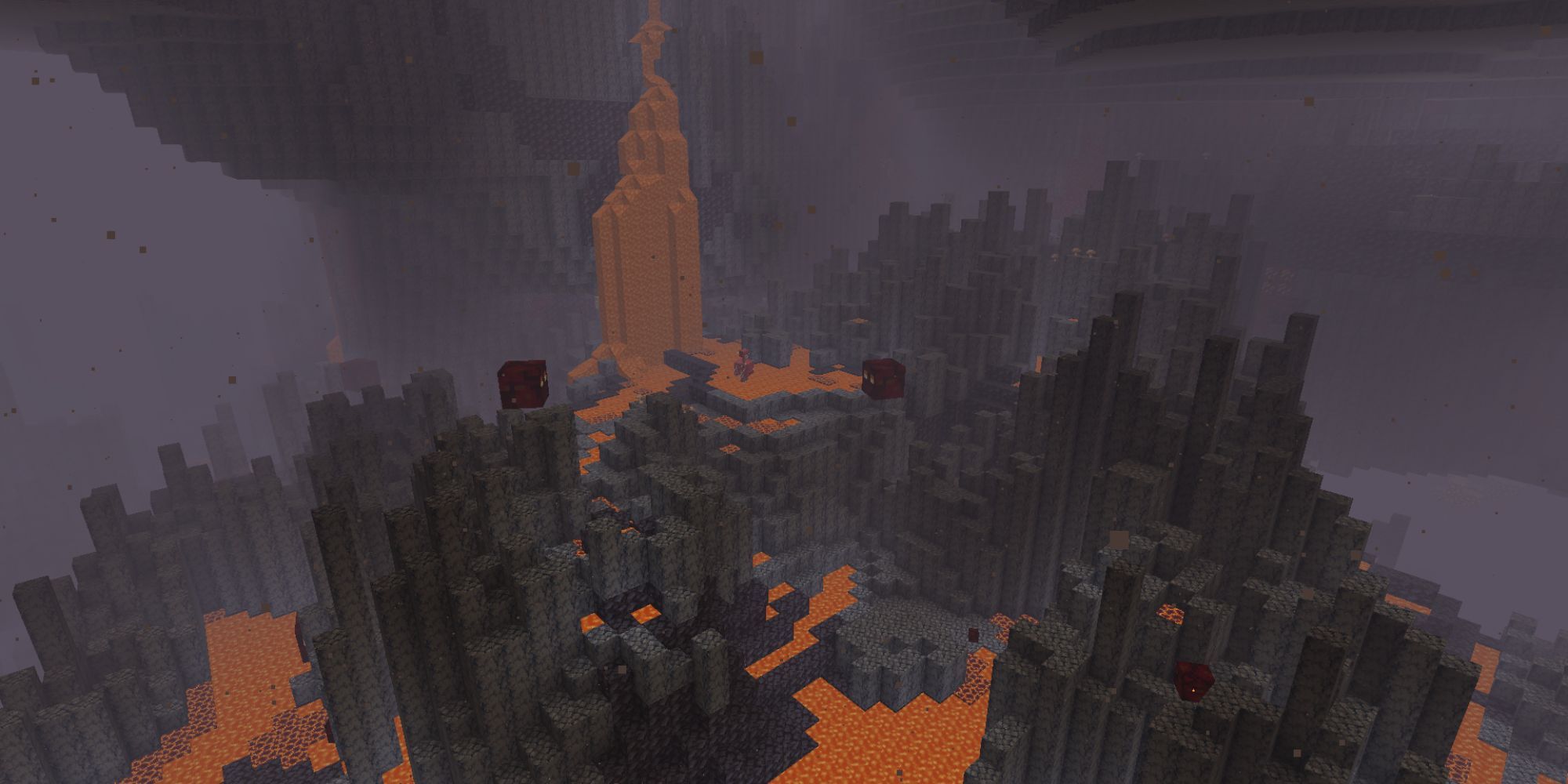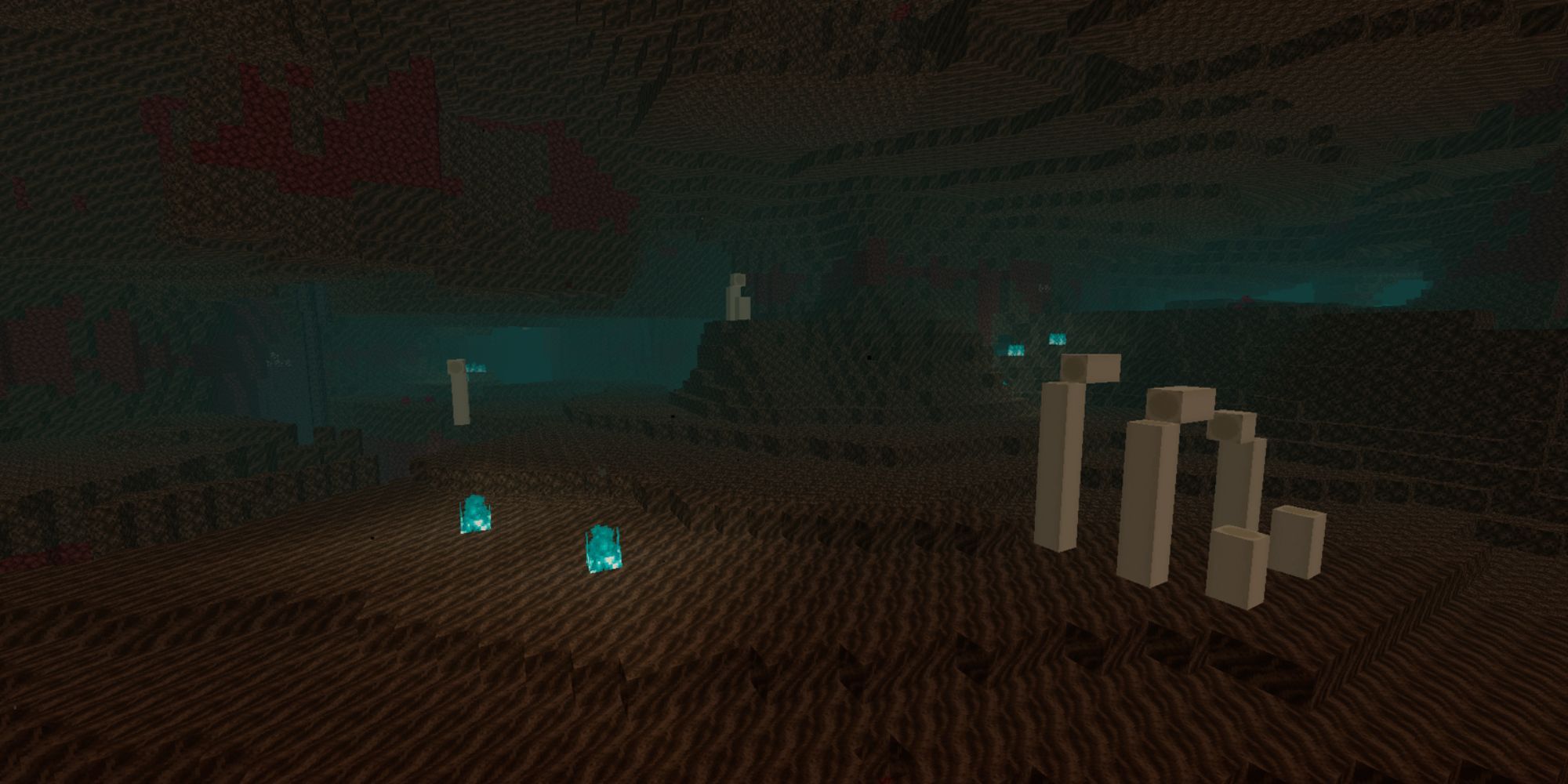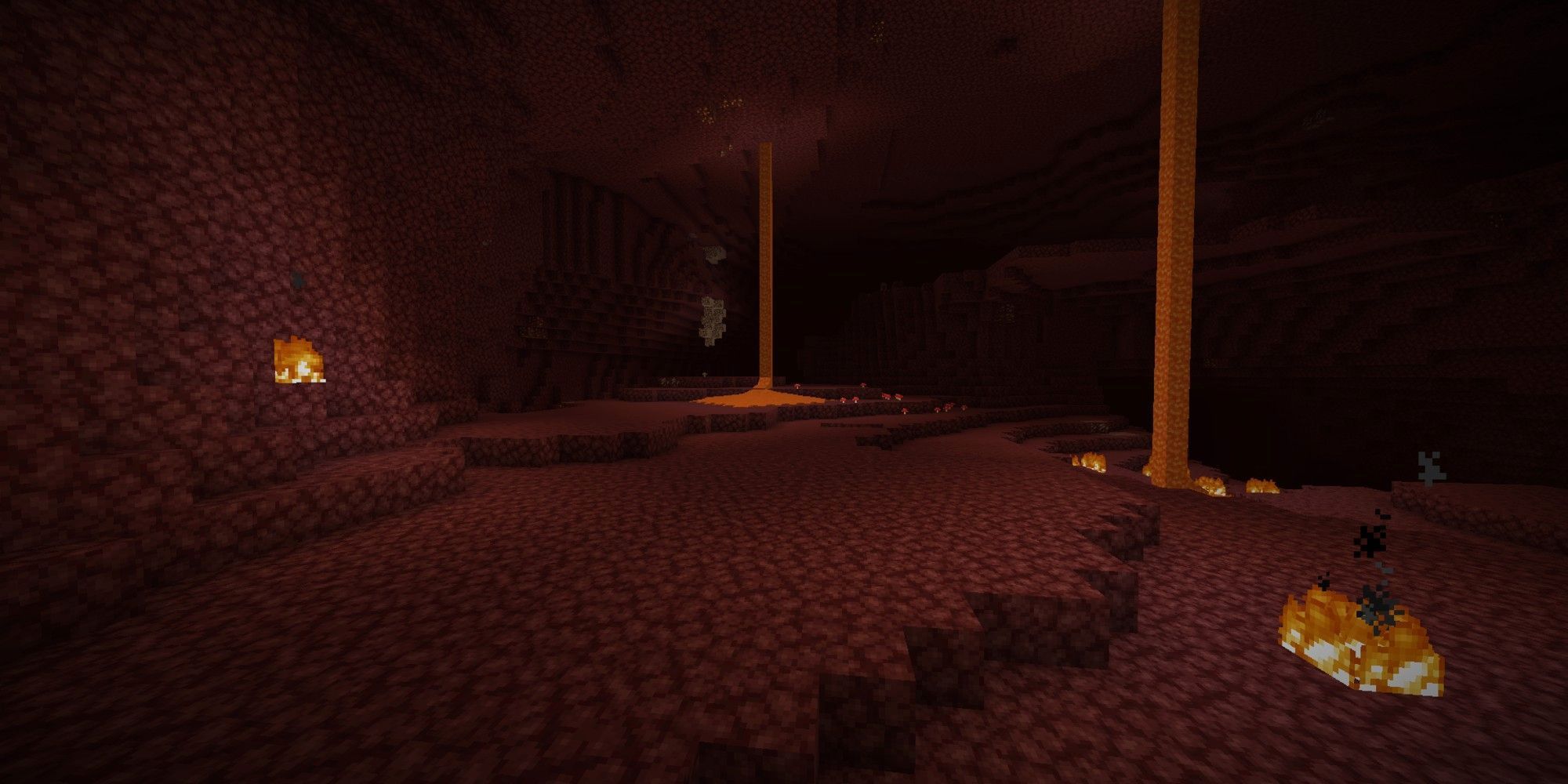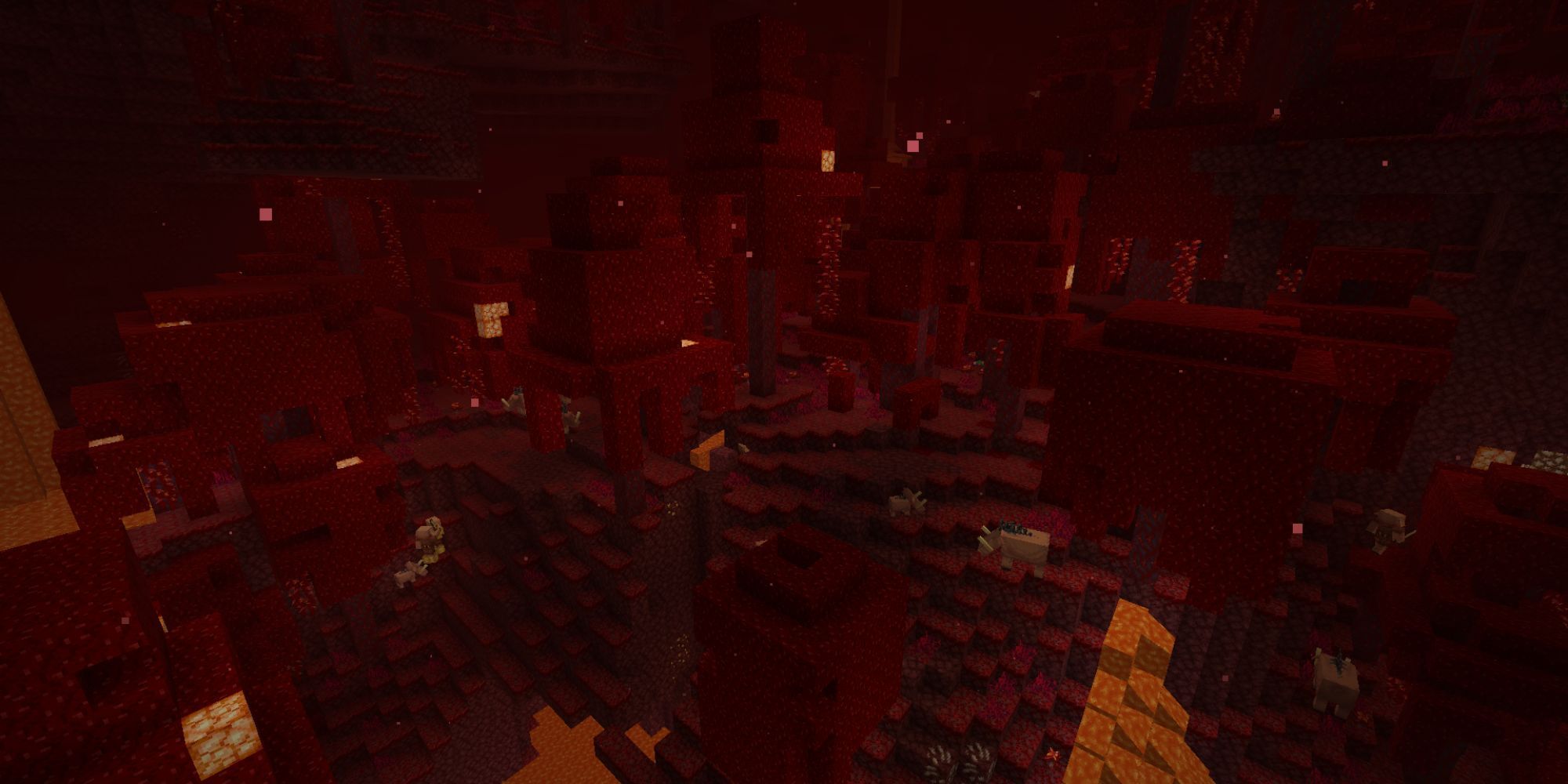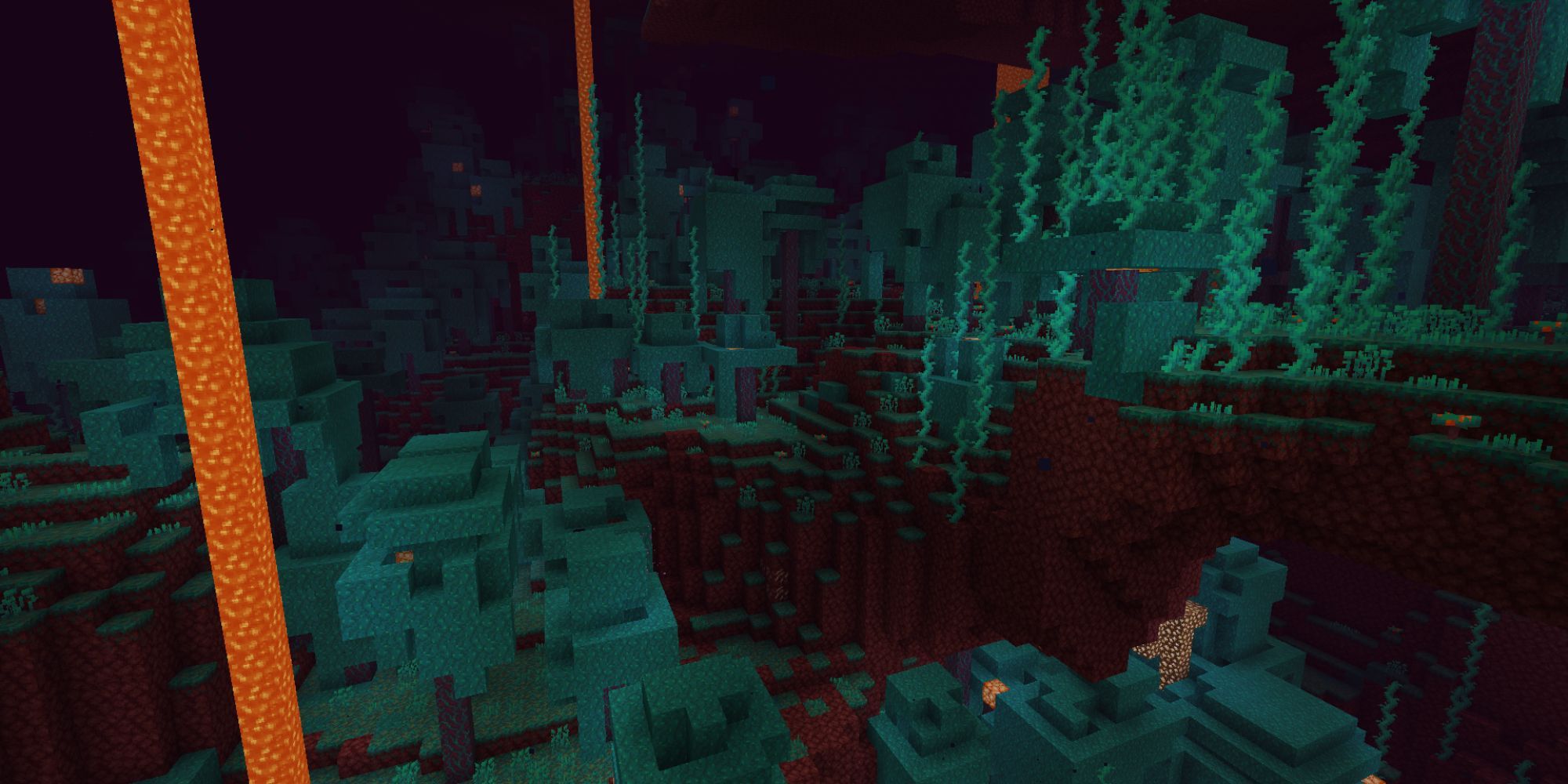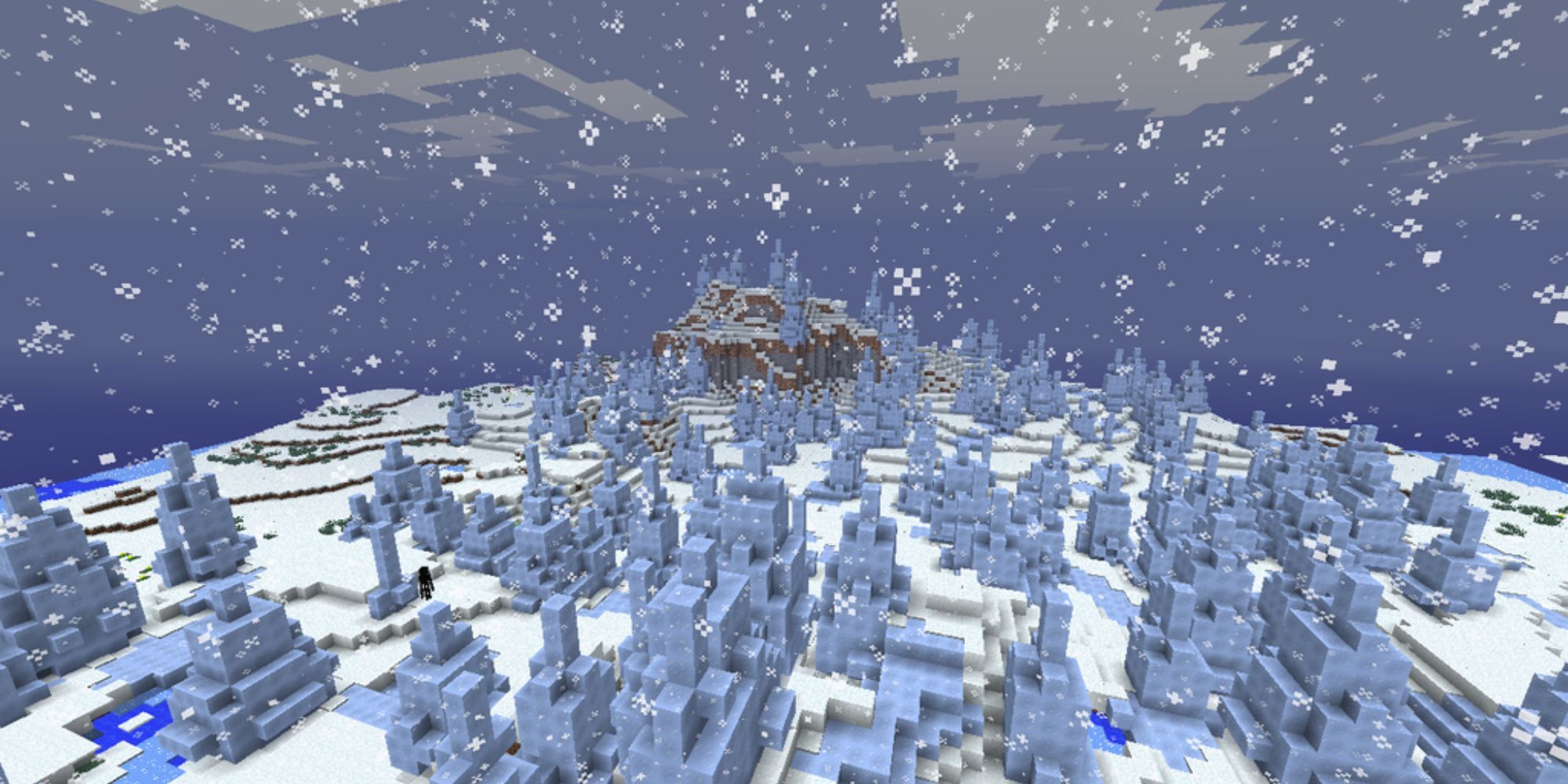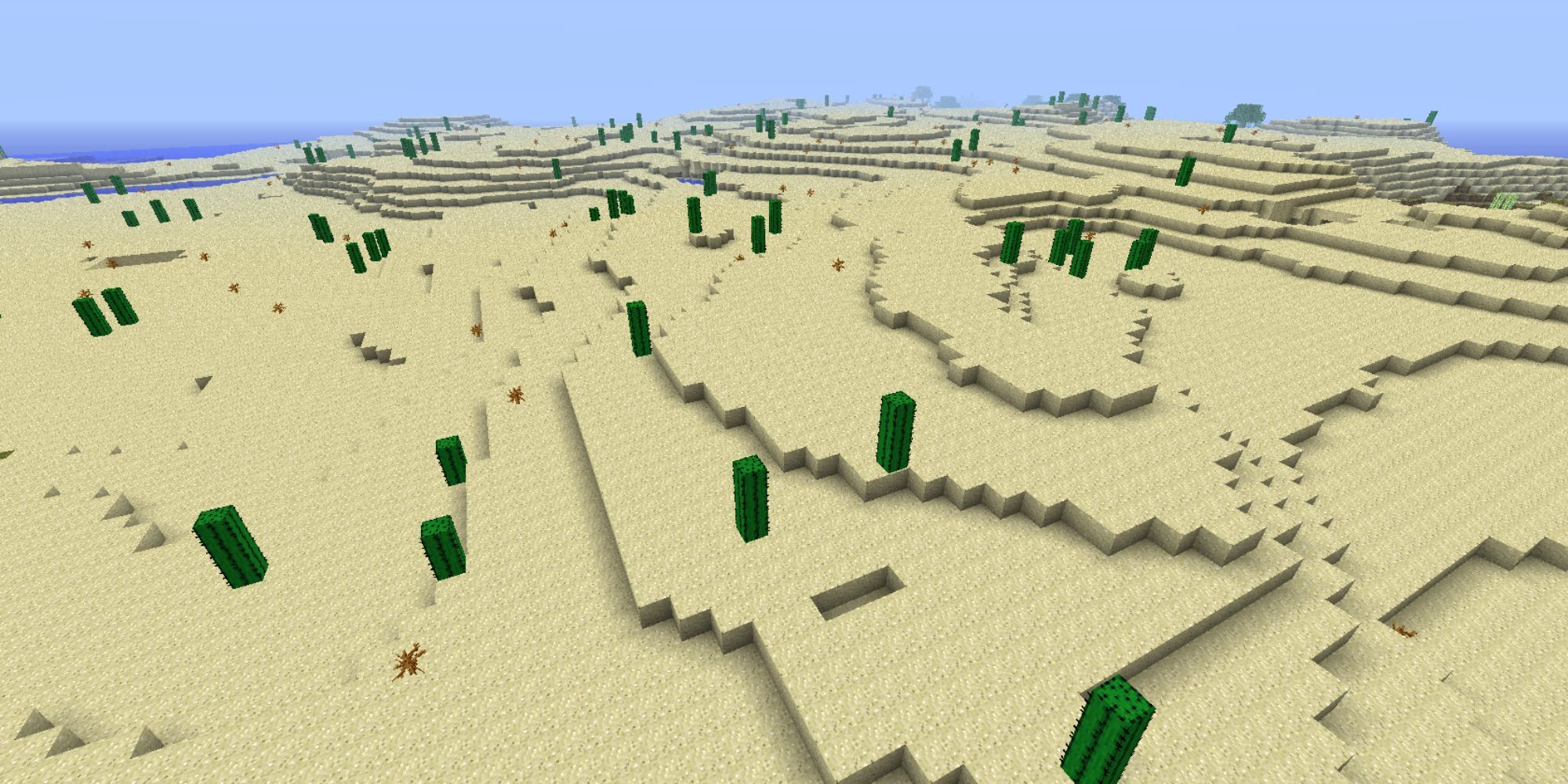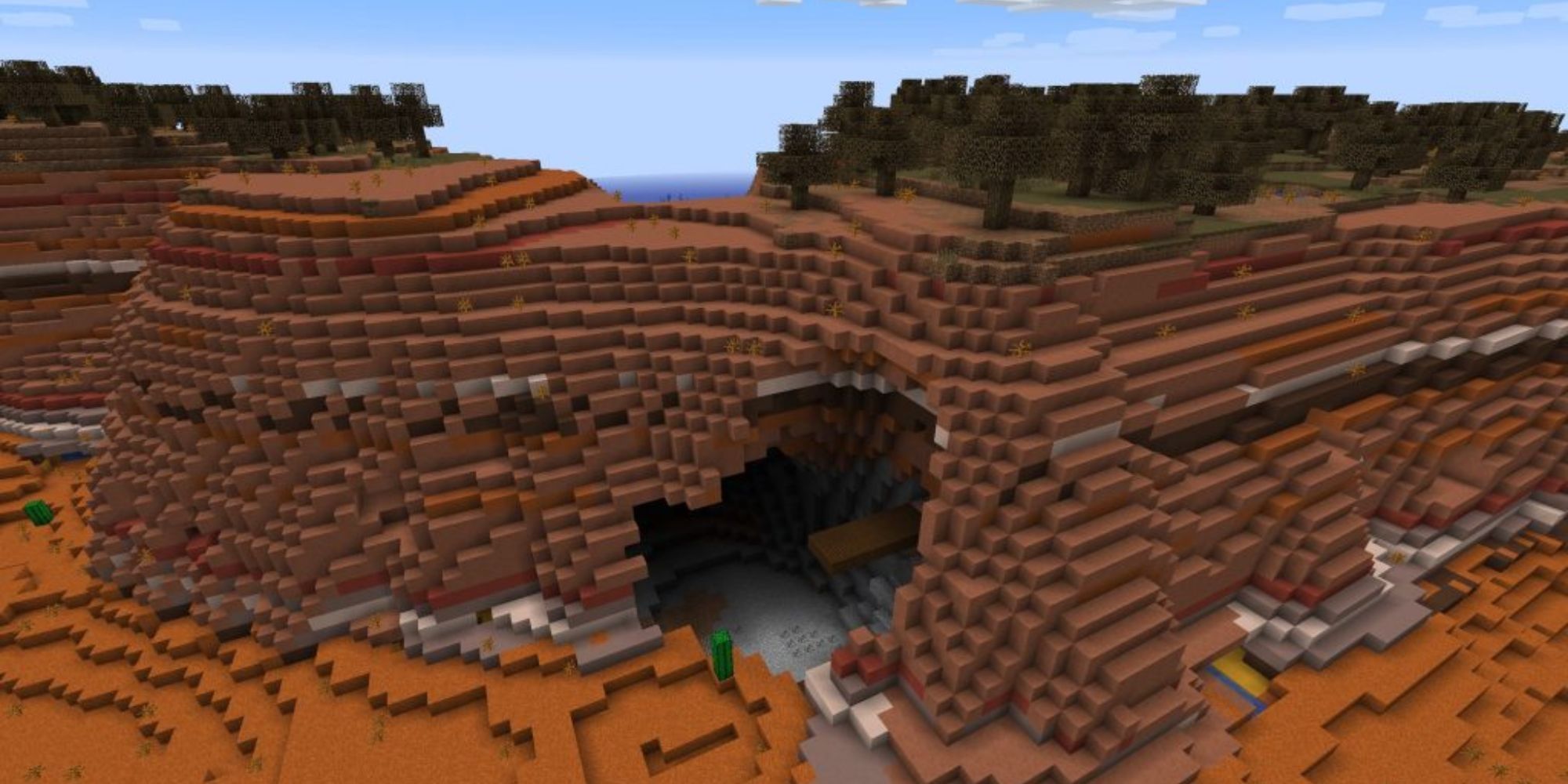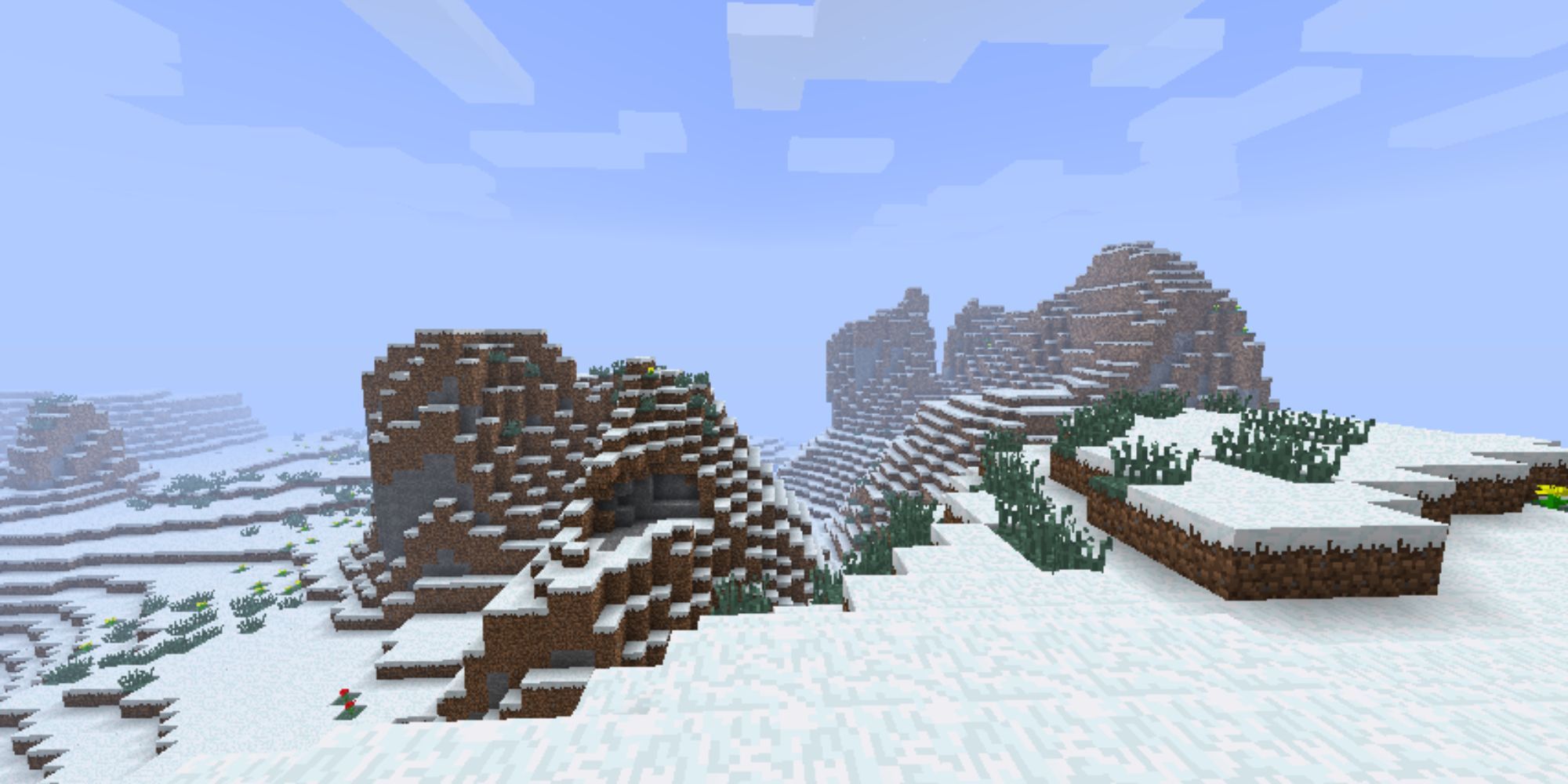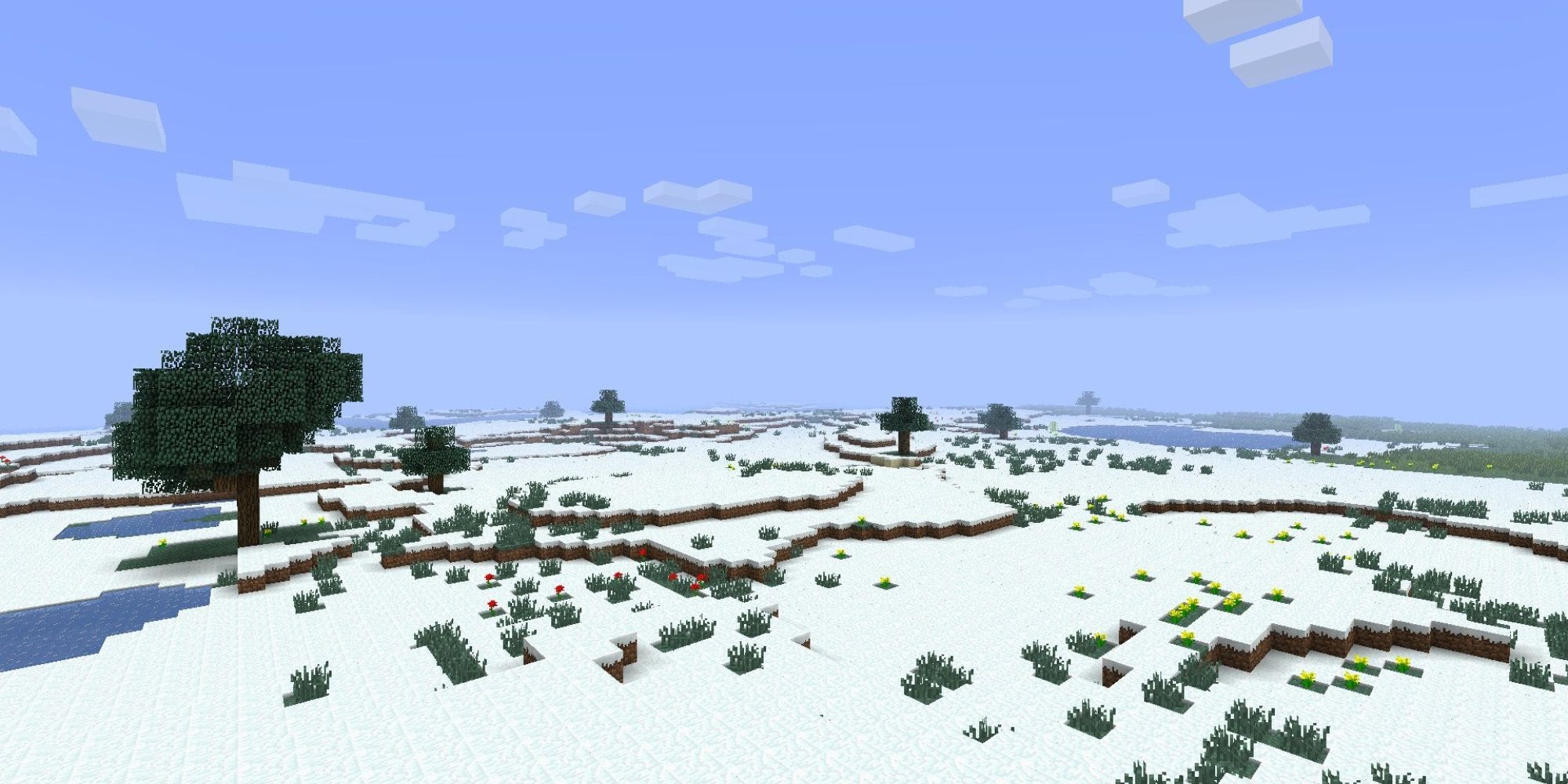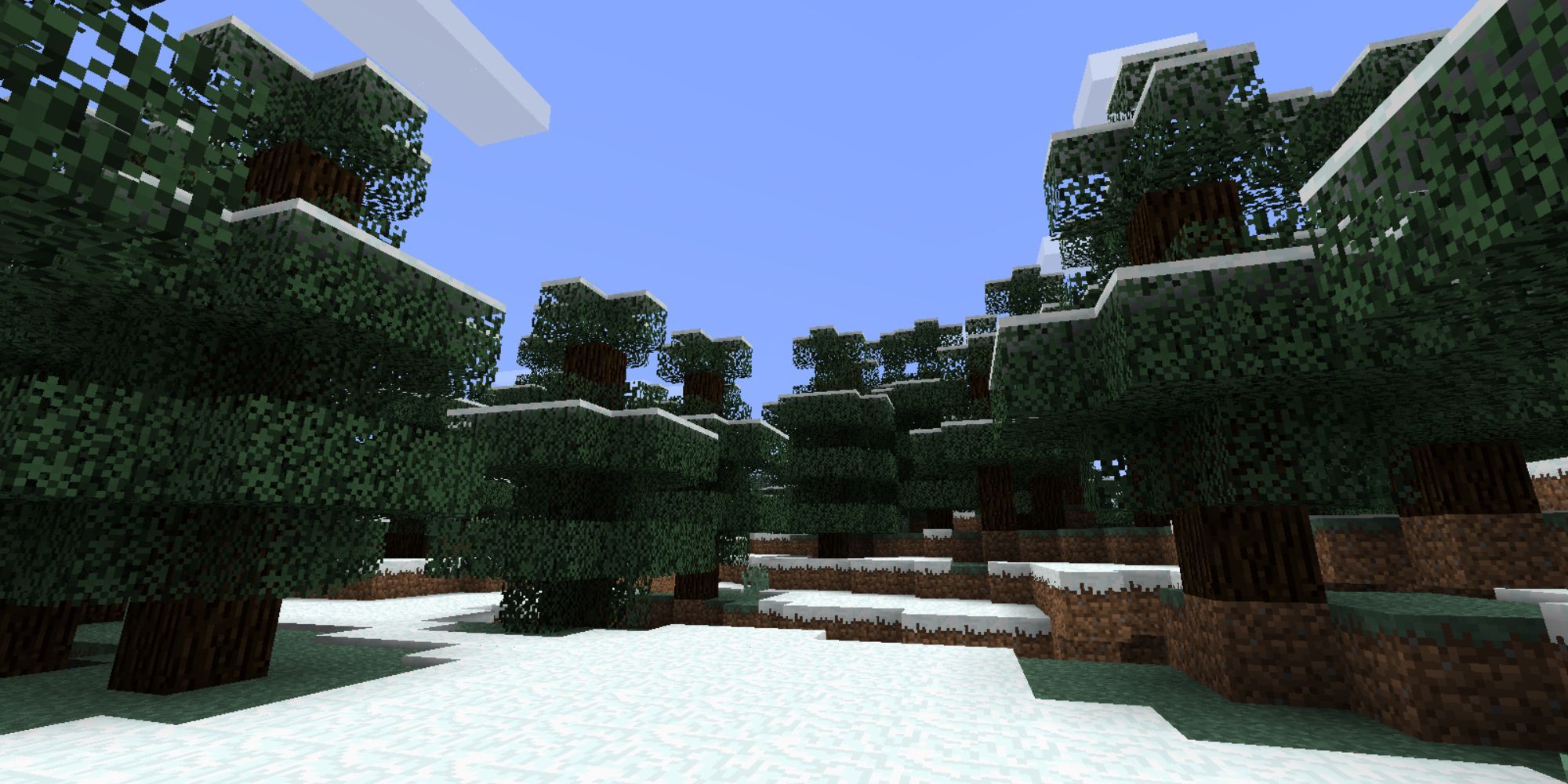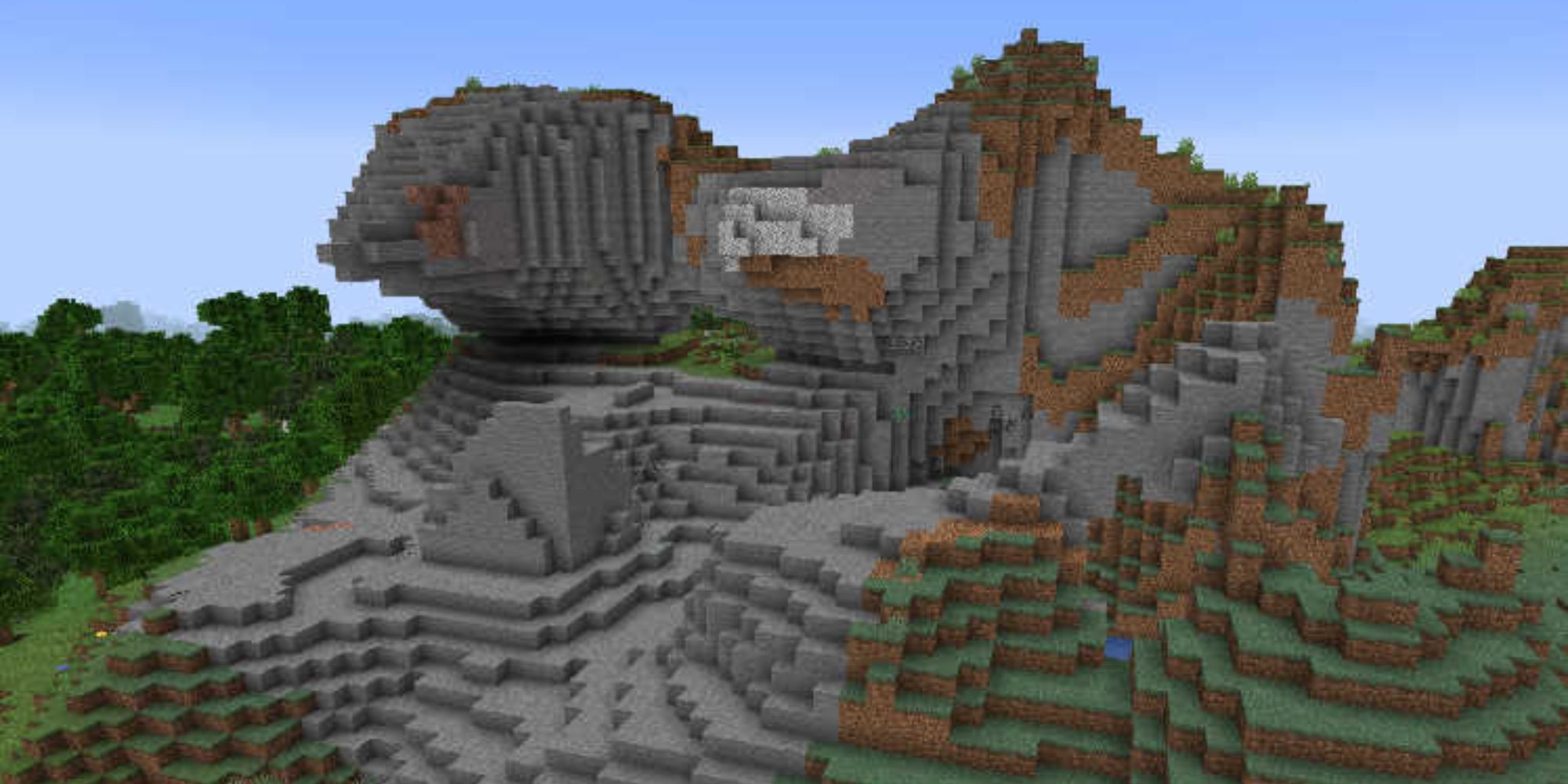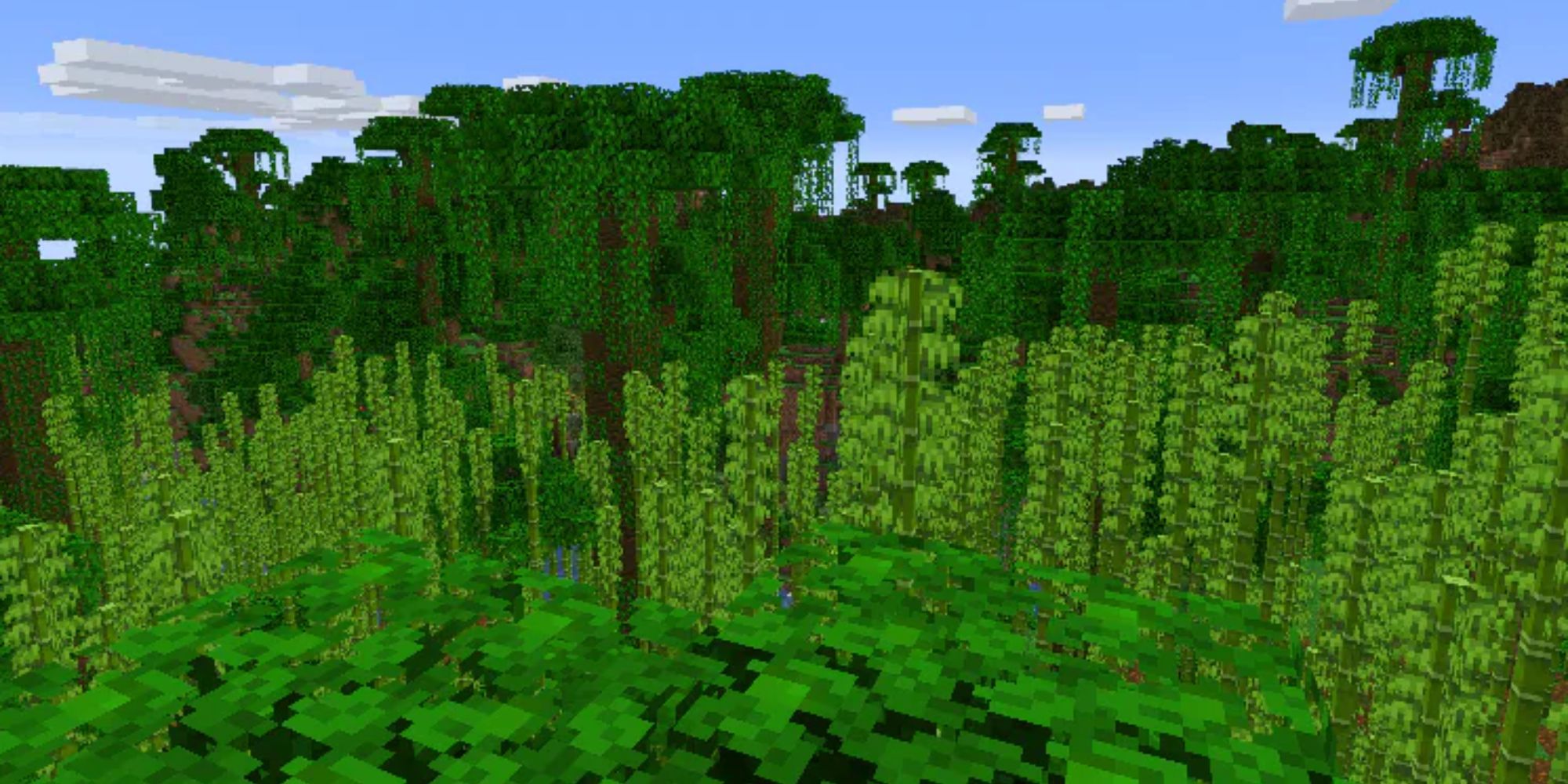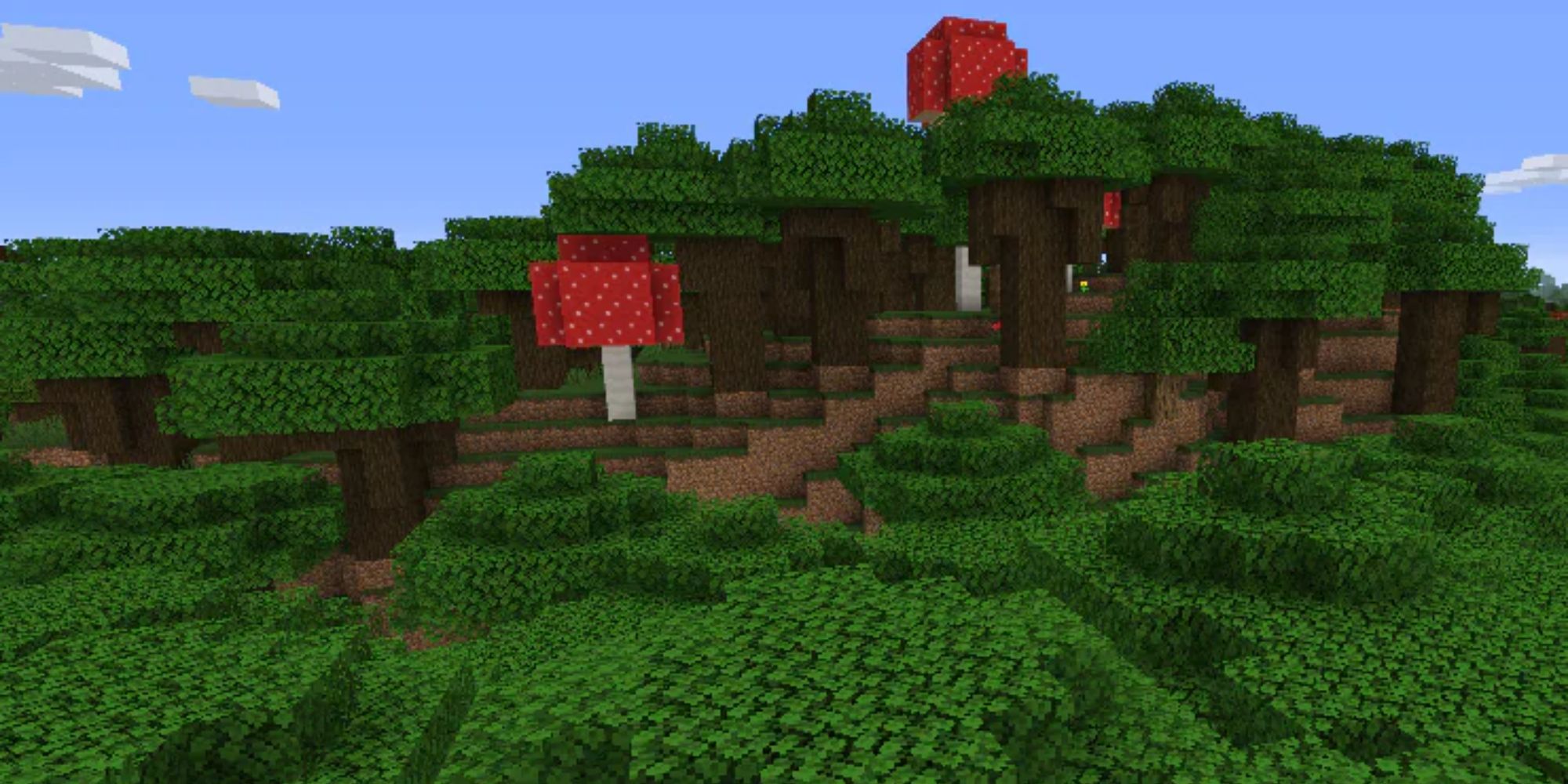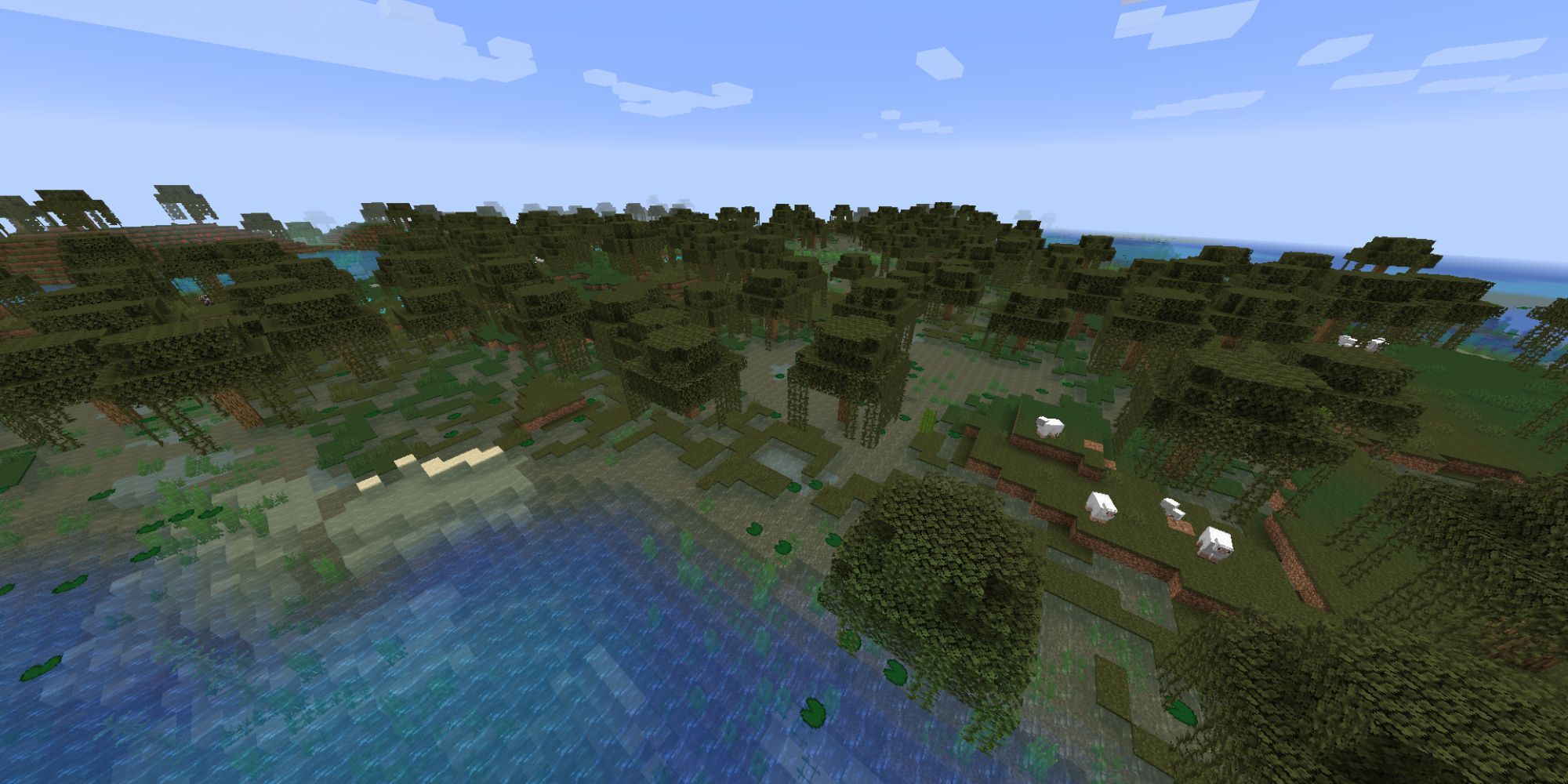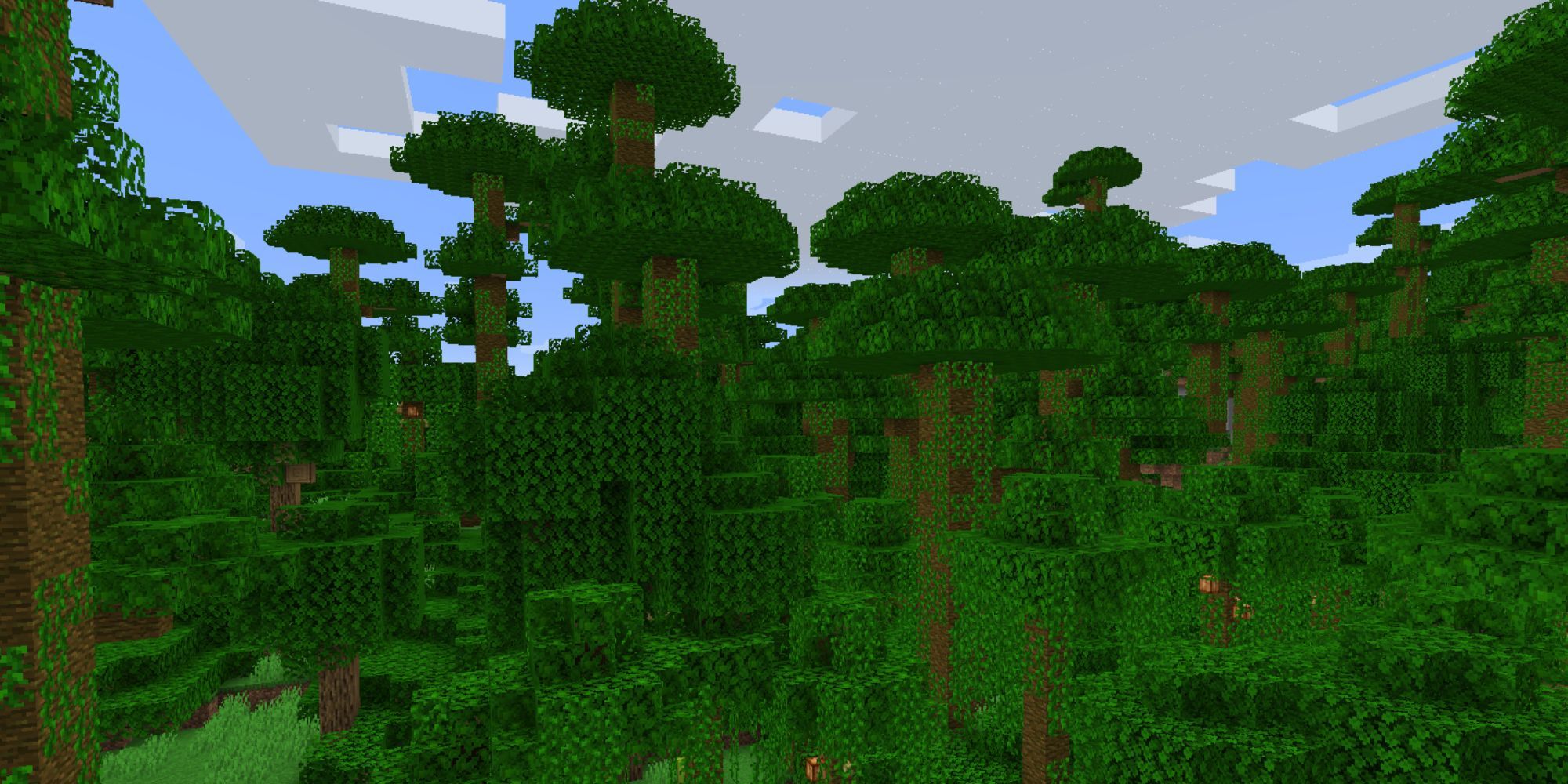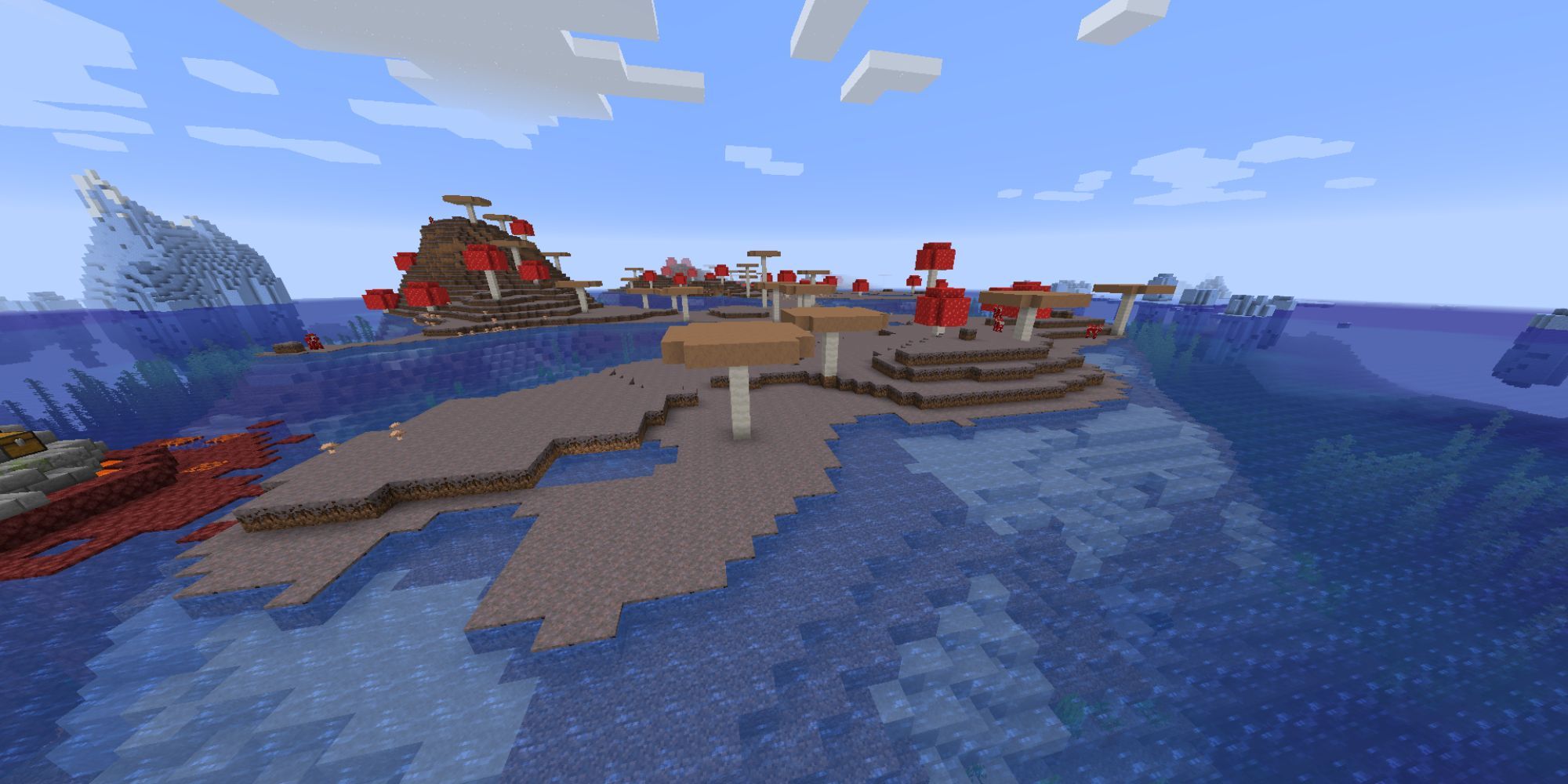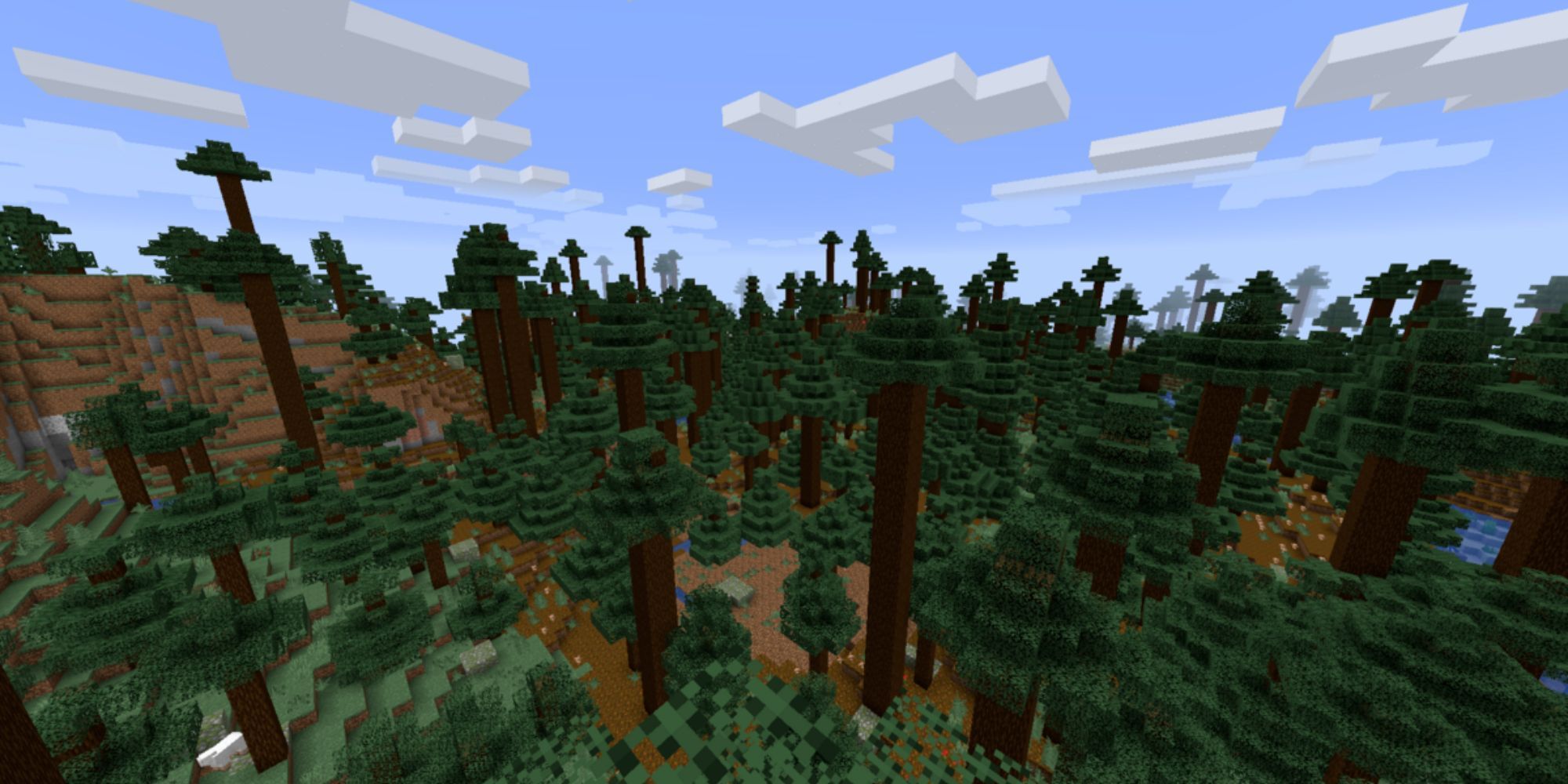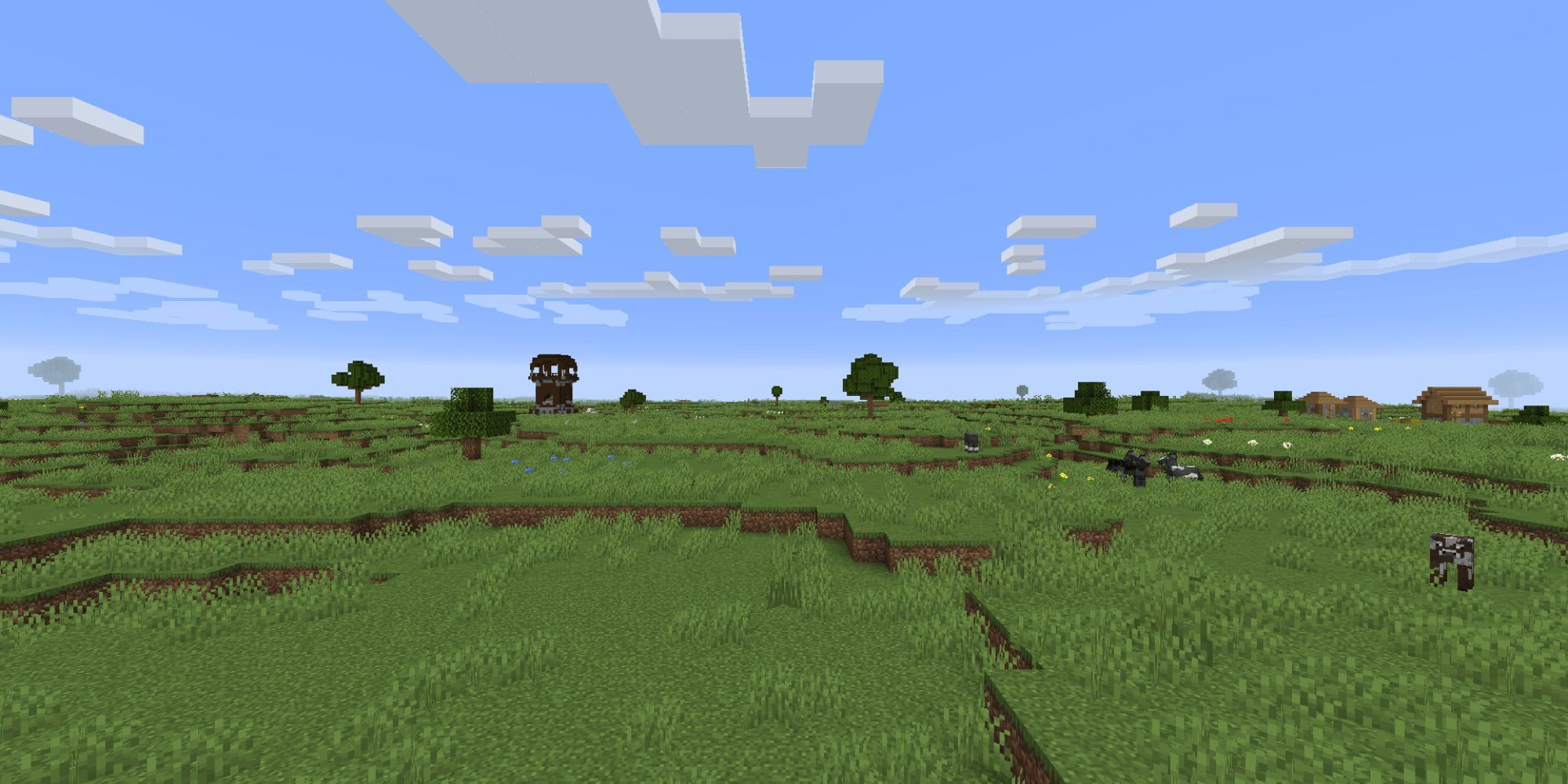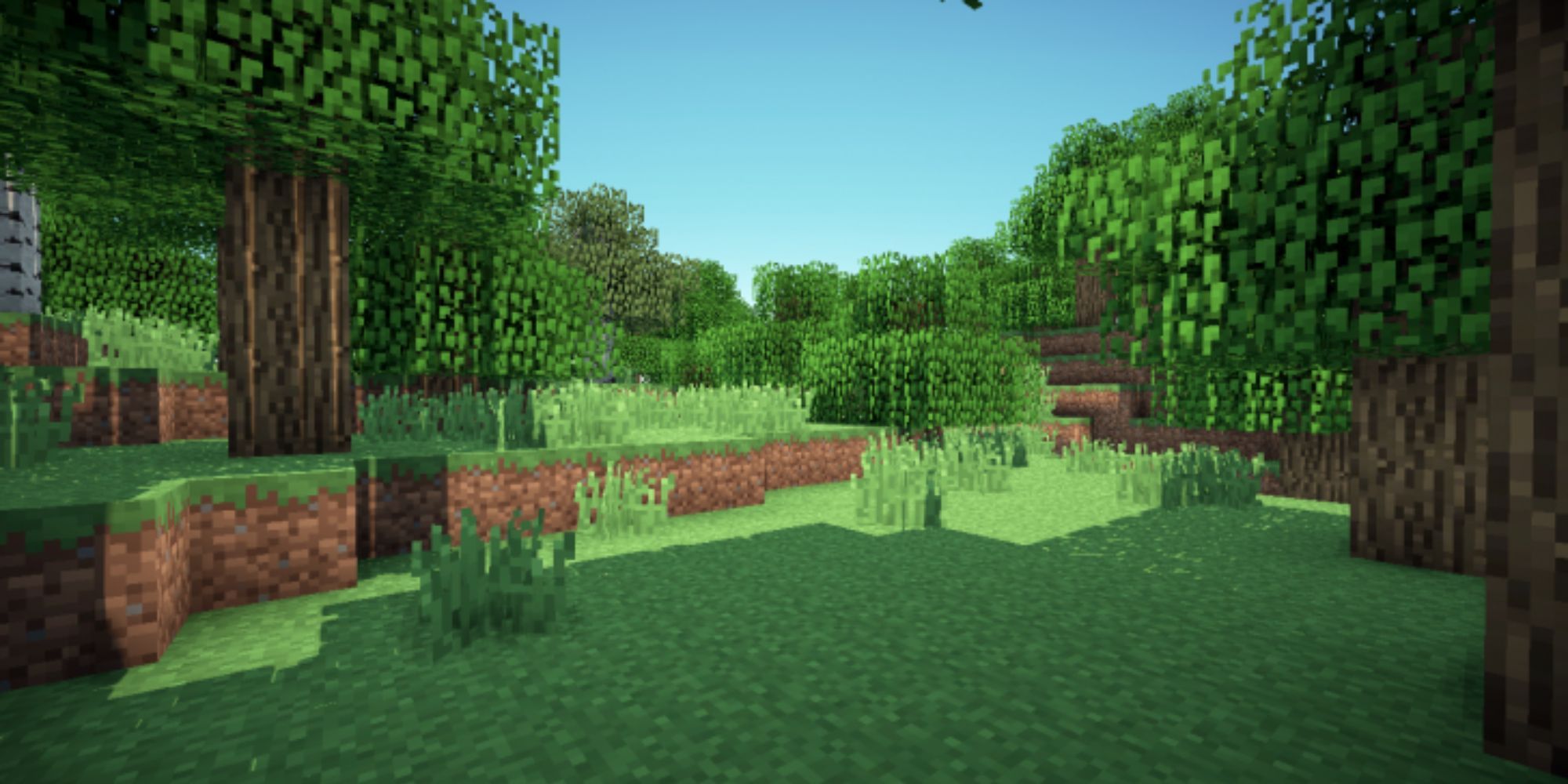The choice of a biome to live in is one of the most important early game decisions Minecraft players will need to make. And with so many biomes available in the Overworld and the Nether, it's by no means an easy decision to make. Builders in particular, who want an aesthetically pleasing area, will struggle with this.
That's why this list has compiled all of the primary biome types and ranked them by their pros and cons. These biomes include their sub biomes, which usually are just terrain variants of the same biome archetype. The End biomes have not been considered for the list. For those wondering where to start their first Minecraft base, here are all the biomes in Minecraft ranked according to their pros and cons.
21 Basalt Delta
Pros:
- Easy to farm Magma Cream
Cons:
- Hard to navigate
- Too much lava
- No food or wood
- Hard to build in
- Few structures spawn here
This Nether biome is perhaps the worst choice in the game. There's not much to see here, other than basalt, lava, and Magma Cubes that will attack the player on sight. It's easily the worst biome in the game right now, and also the worst Nether spawn.
20 Soul Sand Valley
Pros:
- Easy to farm skeletons
- Bone blocks drop bone meal
Cons:
- Soul sand makes it hard to navigate
- Dangerous due to skeletons
- No food or wood
Soul Sand Valleys might look impressive, but they're a pretty dead biome without any major resources. There are bone blocks around, certainly, which makes it a great place to come and farm bone meal. Otherwise, this is a terrible biome to live in.
19 Nether Wastes
Pros:
- Structures spawn commonly here
- Great for mining gold, quartz, and Netherite
Cons:
- Lots of hostile mobs spawn here
- Terrain is unpredictable
- No food or wood
The classic Nether biome, the Nether Wastes are an okay Nether spawn, but a horrible place to live in. All sorts of mobs spawn here, not just Zombie Pigmen, but also Piglins, Skeletons, and such. Their redeeming quality is the fact that they're the easiest biome to mine in.
18 Crimson Forest
Pros:
- Great for trading with Piglins
- Great for farming Hoglins for food
- Structures spawn here
- Wood in abundance
Cons:
- Dangerous without any gold armor
- Hoglins can gang up on players easily
- Unlivable due to abundance of mobs
Impressive visually, the Crimson Forest is a highly dangerous biome to live in. Sure, there's a lot of trading to be made with Piglins, and Hoglins provide a steady source of food in the Nether, but there are just too many mobs for it to be a good biome for long-term base building.
17 Warped Forest
Pros:
- Fewer mobs spawn here
- Great for farming Endermen
- Wood readily available
Cons:
- No source of food
- Still in the Nether, so beds can't be used
The Warped Forest is also visually quite stunning and is actually the safest Nether biome due to the fact that it doesn't spawn Piglins or Hoglins. Both mobs seem to avoid this place like the plague. Endermen, on the other hand, call this their Nether home.
16 Ice Spikes
Pros:
- Visually stunning biome
- Polar bears and rabbits can be found here
Cons:
- Hard to navigate
- Difficult to build in
- No structures spawn here
- No easy food sources
Ice Spikes are an impressive sight, but as a cold biome, it's among the worst. It's very hard to build here, and there's barely any food to be found nearby. Wood is also practically nonexistent here, and let's not even talk about how difficult it is to navigate this biome.
15 Desert
Pros:
- Villages and pyramids spawn here
- Easy to navigate
- Easy to build in
Cons:
- Very little food, wood, and water
- Visually bland
- No weather changes
- Mobs seem to spawn more abundantly due to flat ground
The flatness of a desert biome might sound appealing, but it's a very barren biome with no versatility or weather changes. In short, it's a lot of the same, which gets really boring after a while. Plus, finding animals for food and getting wood here is practically impossible.
14 Badlands
Pros:
- Easy place to find gold abundantly
- Mineshafts spawn at a higher elevation
- Terracotta and colorful sand are abundantly available
Cons:
- No reliable food sources
- Not enough trees
- Villages don't spawn here
Looking for gold? Badlands is the best biome for finding gold in Minecraft. It spawns mineshafts at the surface level as well, so they're quite nice for exploration and mining. However, living and building here is a bad idea due to the lack of food and wood.
13 Snowy Mountains
Pros:
- Goats and rabbits spawn here
- Igloos sometimes spawn here
- Visually stunning, with good visibility
- Emerald, coal, and copper are readily available
Cons:
- Fewer trees
- No easy sources of food
- Other structures are rare
Mountains are a loved biome among Minecraft players, but never pick a snowy mountain if food and wood are important resources. These snowy peaks and their variants barely spawn any passive mobs that are useful for food, and trees are usually located on the low ground, which can make farming for them annoying.
12 Snowy Plains
Pros:
- Easy visibility
- Easy to build in
- Villages, igloos, and pillager outposts can spawn here
Cons:
- Few easy sources of food
- Almost no trees
- Difficult to farm in
Snowy plains are another barren biome in Minecraft. There are barely any trees or passive mobs ideal for food farming, so survival in a biome like this is quite difficult. Only an igloo, village, or pillager outpost will make a snowy plains biome valuable.
11 Snowy Taiga
Pros:
- Loads of trees
- Villages, igloos, and pillager outposts can spawn here
- Foxes spawn here, along with sweet berry bushes
Cons:
- No easy sources of food
- Farming is difficult due to the cold
- Can get boring
The snowy taiga is probably the easiest biome to live in out of all the snowy variants. While food is still rare, villages, igloos, and pillager outposts have a chance of appearing here. Plus, sweet berry bushes provide a bit of food in a pinch, and there's tons of wood around for building.
10 Hills
Pros:
- Great visibility and height
- Passive mobs are more abundant when not snowy
- Emeralds spawn here, along with surface coal
- Visually great for building
Cons:
- Fewer trees for wood
- Structures don't spawn here
If building up high is important, players should pick hilly biomes that are temperature. These will still spawn passive mobs. While trees will still be rare, the biome makes up for it with great mining opportunities. Emerald can be found here, along with surface-level coal.
9 Bamboo Jungle
Pros:
- Bamboos and pandas can be found here
- Loads of trees and greenery
- Passive mobs can be found for food
Cons:
- Bamboo can make navigating the forest more difficult
- Hard to find since it's rare
- Pandas have limited utility
Bamboo jungles are a cool choice for players who want something new and different from their environment. Plus, they have a chance of seeing pandas spawn near their home. While there's an abundance of natural resources and food, usually, these biomes are rare and the bamboo forests are sometimes difficult to navigate.
8 Dark Forest
Pros:
- Lots of wood
- Lots of passive mobs for food
- Woodland Mansions occasionally spawn here
- Giant mushrooms provide extra food
Cons:
- Very dense, so visibility at ground level is low
- Mobs spawn under the trees during day time
- Lots of clearing is needed for building
When it comes to wood, Dark Forest biomes are the best biomes in Minecraft. There's simply no shortage of natural resources, and passive mobs are usually around as well, and in great numbers. The problem is that these forests are quite dense and dark, so mobs can spawn under the foliage during the daytime, and these forests require a lot of clearing for building.
7 Swamp
Pros:
- Loads of trees
- Loads of passive mobs for food
- Slimes spawn abundantly during a full moon
- Witch huts can spawn here
Cons:
- Visually stale
- Spots of water make it difficult to navigate and build on
Sure, swamps aren't the most visually appealing biome in Minecraft, but they are still an okay choice. There are a ton of resources in swamps, from passive mobs to wood. Plus, slimes spawn here more often than in other biomes. The only issue is that the biome just looks dirty and depressing.
6 Jungle
Pros:
- Loads of wood and greenery
- Loads of food from passive mobs
- Rare mobs like parrots and ocelots
- Melon and cocoa beans are found here
- Jungle Temples can be found here
Cons:
- Very hard to traverse
- Building requires a lot of clearing
- Mobs can spawn under trees in dense areas
Regular jungle biomes are a great find for any player, due to the rare resources they carry. Players can find melons, cocoa beans, parrots, ocelots, and even jungle temples. There's a lot of food and wood to be farmed here, but the price is a lot of clearing with shears to get rid of the dense undergrowth on the jungle floor.
5 Mushroom Fields
Pros:
- No hostile mobs, ever
- Mooshrooms can be milked for infinite mushroom stew
- Unique terrain
- Giant mushrooms provide extra food
Cons:
- No wood
- Structures don't spawn here
- Rare to find
- Impossible to farm hostile mob drops
An extremely rare biome, the Mushroom Field biome is somewhat of a fantasy land. They typically spawn as islands and are quite difficult to find. Their specialty is the fact that no hostile mobs will ever spawn there. Moreover, the local Mooshrooms can be milked for mushroom stew, so food is very abundant. On the other hand, there are no trees for building.
4 Old Growth Taiga
Pros:
- Visually unique biome
- Loads of trees and passive mobs
- Spawns mossy cobblestone and
Cons:
- Rare to find
- Building requires clearing tall trees
If players love the idea of giant trees, this Old Growth Taiga biome is perfect. It also just brings in something new and fresh into the taiga archetype. There are rare blocks like podzol and mossy cobblestone to be found, too. Overall, it's a very solid choice for players, though a bit rare.
3 Plains
Pros:
- Lots of passive mobs
- Easy visibility
- Villages and pillager outposts spawn regularly
- Horses spawn here
- Easy for building
Cons:
- Wood is sparse but close by
Plains are an excellent biome to build in and survive. There's a lot of food around, as passive mobs spawn in large herds here and there. Horses also spawn quite abundantly in this biome. No clearing is needed for building, though trees don't spawn here very often so actually finding wood might be challenging unless there's a forest nearby. Villages are very common here, along with Pillager Outposts, too.
2 Forest
Pros:
- Loads of wood
- Loads of passive mobs for food
- Beehives and bees can spawn here
- Great for starting out in the game
Cons:
- No villages or other overground structures usually spawn here
The most common biome has to be the basic forest and its variants. It's an extremely boring biome for many players, but no one can deny the fact that it's a very good one due to the abundance of resources. There's plenty of wood, tons of food thanks to passive mobs spawning here, and it's not too much of a hassle to clear space for a build. The only downside is that regular, temperate forests don't spawn any overground structures.

.jpg)
